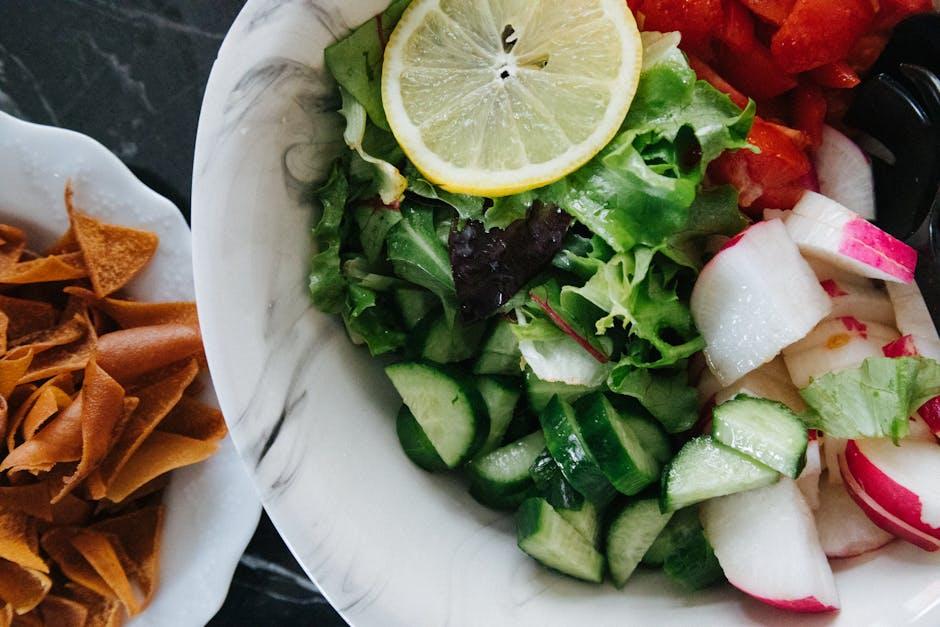In a world where culinary delights and dietary dilemmas often collide, achieving the perfect balance of macronutrients without tipping the scales of calorie intake can feel like an elusive dream. Yet, imagine a journey where flavors dance in harmony, nourishment fuels vitality, and each meal is a step toward a healthier you. Welcome to the art of balancing macronutrients—a delightful exploration that doesn’t require sacrificing your favorite foods or counting every calorie with a magnifying glass. With a sprinkle of creativity and a dash of optimism, this guide will illuminate the path to mindful eating, empowering you to savor each bite while nurturing your body and soul. Get ready to embark on a culinary adventure where health meets happiness, and the scales of nutrition are forever in your favor.
Mastering the Art of Nutrient Harmony
Achieving a perfect balance in your macronutrient intake is like composing a symphony where proteins, carbohydrates, and fats play in harmony. It’s not about deprivation but about mindful orchestration. Start by recognizing the essential roles these macronutrients play. Proteins are your body’s building blocks, aiding in muscle repair and growth. Carbohydrates fuel your energy needs, keeping you vibrant and active. Fats are the unsung heroes, supporting cell function and hormone production.
Here’s how you can harmonize your plate without tipping the caloric scales:
- Prioritize Whole Foods: Opt for natural, unprocessed ingredients that provide more nutrients per calorie.
- Portion Mindfully: Use your hand as a guide—palm-sized protein, fist-sized carbs, and thumb-sized fats.
- Embrace Variety: Mix different sources of each macronutrient to avoid monotony and ensure a spectrum of nutrients.
- Listen to Your Body: Pay attention to hunger cues and energy levels to adjust your intake as needed.
By focusing on quality and balance, you can savor every bite while maintaining a healthy lifestyle. Remember, the key to nutrient harmony is not about restriction but about making each calorie count with purpose and joy.

Crafting a Colorful Plate of Balanced Nutrition
When it comes to achieving a vibrant and nourishing meal, think of your plate as a canvas, and the macronutrients as your palette. The key to crafting this masterpiece is ensuring you have a harmonious blend of proteins, carbohydrates, and fats. Start with a base of lean proteins like grilled chicken, tofu, or legumes, which not only provide essential amino acids but also keep you feeling full and satisfied. Then, add a splash of color with a variety of vegetables such as spinach, bell peppers, and carrots, which are rich in vitamins and minerals while being low in calories.
To round off your plate, include healthy fats that bring both flavor and health benefits. Avocados, nuts, and seeds are excellent choices that add a delightful texture and richness to your meal. Don’t forget the complex carbohydrates like quinoa, brown rice, or sweet potatoes, which offer sustained energy throughout the day. Here’s a simple checklist to ensure your plate is as balanced as it is beautiful:
- Proteins: Lean meats, tofu, beans
- Vegetables: A rainbow selection for a variety of nutrients
- Fats: Avocado, nuts, seeds
- Carbohydrates: Whole grains, starchy vegetables
By following this approach, you can enjoy a delightful meal that is both nourishing and pleasing to the eye, without the worry of excessive calorie intake. Embrace the art of balance and let your meals be a testament to healthy living!

Discovering Flavorful Low-Calorie Swaps
Embarking on a journey to balance your macronutrients doesn’t mean sacrificing taste or exceeding your calorie goals. Instead, it opens up a world of creative, flavorful swaps that keep your meals exciting and your nutrition on point. Here are some delightful substitutions to consider:
- Cauliflower for Rice: This versatile veggie can be grated into a rice-like texture, offering a low-calorie, nutrient-rich base for stir-fries and bowls.
- Zucchini Noodles: A spiralizer can transform zucchini into delightful noodles, perfect for soaking up your favorite pasta sauces without the extra calories.
- Greek Yogurt for Sour Cream: Rich in protein and low in fat, Greek yogurt is a creamy alternative that adds tanginess to dips and dressings.
- Avocado for Butter: Use mashed avocado in baking or on toast for a heart-healthy fat option that’s creamy and delicious.
Each swap not only cuts down on calories but also introduces a variety of nutrients, ensuring that your meals are as balanced as they are satisfying. With a little creativity, it’s possible to enjoy all your favorite flavors while maintaining your nutritional goals.
Embracing Mindful Eating for a Healthier You
Finding the sweet spot between consuming the right amount of macronutrients and not going overboard with calories can be an art. Here are some tips to help you achieve this delicate balance:
- Prioritize Whole Foods: Choose foods that are minimally processed. Whole grains, lean proteins, and healthy fats not only provide essential nutrients but also help you feel full longer.
- Mind Your Portions: Use your plate as a guide—half should be filled with colorful vegetables, a quarter with lean protein, and the remaining quarter with whole grains. This visual cue helps manage calorie intake while ensuring nutrient diversity.
- Listen to Your Body: Pay attention to hunger and fullness cues. Eating mindfully means savoring each bite, which can prevent overeating and help you enjoy your meals more.
Remember, the key is to nourish your body with a balance of proteins, fats, and carbohydrates while staying attuned to your body’s needs. By focusing on quality and balance, you can enjoy a diet that supports your health and well-being without the worry of excess calories.



